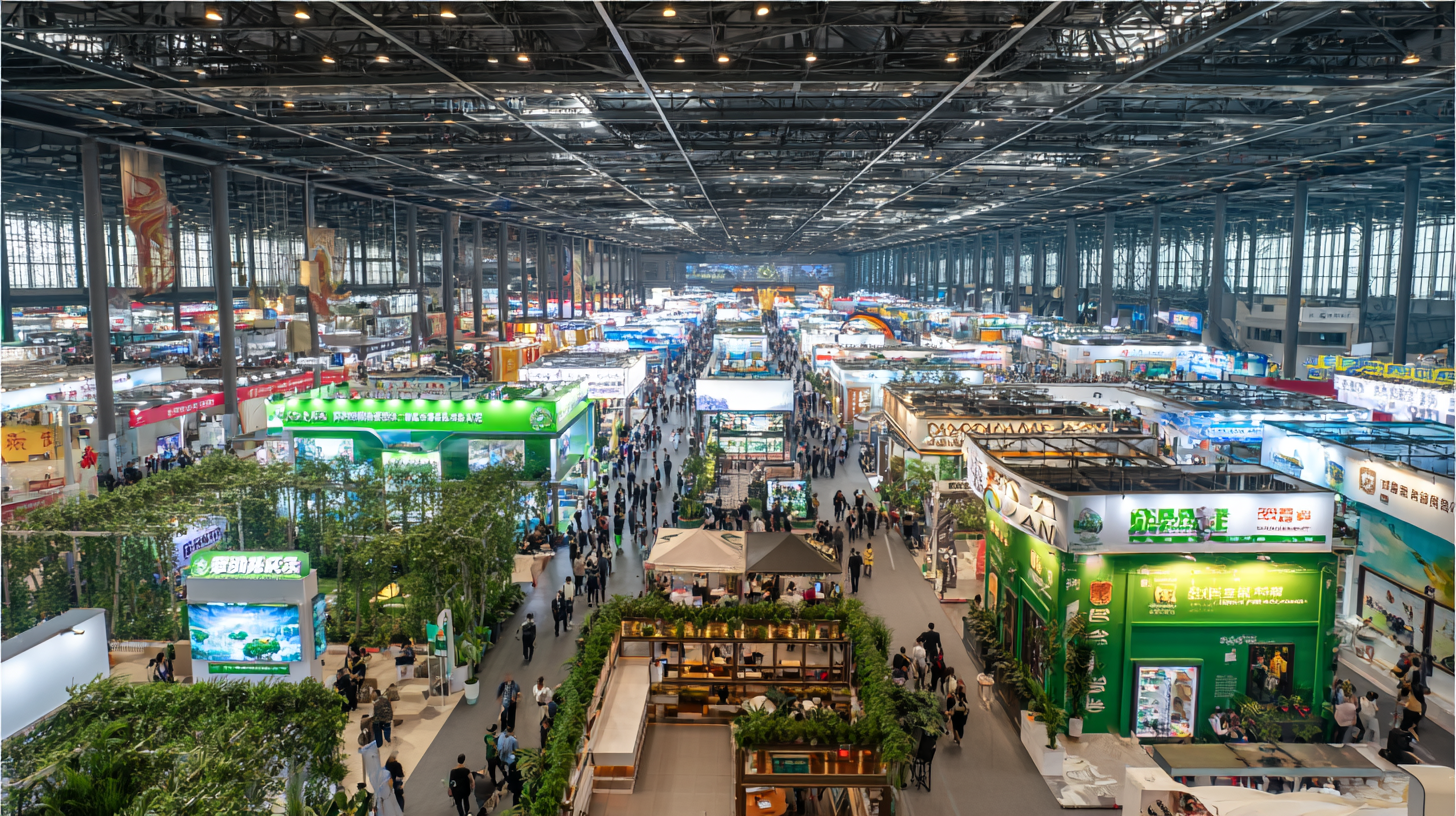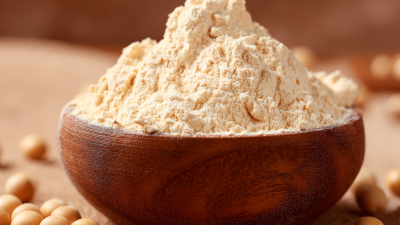The global demand for soy protein has surged in recent years, driven by the rising health consciousness among consumers and the increasing popularity of plant-based diets. As highlighted in the latest market research reports, the soy protein market is projected to grow at a CAGR of 7.5%, reaching approximately USD 20 billion by 2027. This remarkable trend is expected to be a key focus at the
138th Canton Fair in 2025, where industry leaders will gather to explore innovations and market opportunities in soy protein growth.
 With China emerging as one of the leading consumers and producers of soy products, the fair will serve as a vital platform for showcasing advancements in soy protein applications across various sectors, including food, beverage, and nutritional supplements.
The intersection of health trends and sustainable sourcing will undoubtedly shape the future of the industry, making this event crucial for stakeholders aiming to capitalize on the growing soy protein market.
With China emerging as one of the leading consumers and producers of soy products, the fair will serve as a vital platform for showcasing advancements in soy protein applications across various sectors, including food, beverage, and nutritional supplements.
The intersection of health trends and sustainable sourcing will undoubtedly shape the future of the industry, making this event crucial for stakeholders aiming to capitalize on the growing soy protein market.
The rising demand for soy protein in the Asia-Pacific region is set against a backdrop of significant growth in the alternative protein market, which is estimated to reach USD 589.9 billion by 2035. With an increasing emphasis on health, sustainability, and dietary preferences, consumers are shifting towards plant-based alternatives. This shift is reflected in the burgeoning soy protein ingredients market, projected to expand from USD 9.27 billion in 2025 to USD 11.47 billion by 2033, showcasing a strong compound annual growth rate.
The growth of the soy protein sector is further echoed in the Asia Pacific animal feed additives market, which is witnessing rising trends for better nutritional solutions. As the global soybean meal market is forecasted to grow from USD 98.7 billion in 2025 to USD 148.6 billion by 2033, the region's agricultural and food production strategies will increasingly incorporate soy protein to meet both human and animal nutrition demands. Thus, the 138th Canton Fair in 2025 will not only highlight the importance of soy protein but also address the dynamic trends shaping the industry in response to consumer demand and market opportunities.

At the 138th Canton Fair in 2025, key innovations in soy protein processing technologies are set to take center stage, highlighting the rapid advancements in this vital sector. Exhibitors will showcase state-of-the-art extraction methods, which enhance the purity and nutritional profile of soy protein isolates. These technologies not only improve yield but also contribute to a more sustainable production process, aligning with global trends toward environmentally friendly food manufacturing.
 Additionally, advancements in texturization techniques are transforming soy protein into versatile meat alternatives that cater to the growing plant-based diet market. The innovations include cutting-edge extrusion processes that create products mimicking the texture and flavor of traditional meats. This is crucial for attracting a broader audience and satisfying the rising demand for healthier, protein-rich food options. As industry experts gather at the Canton Fair, the exchange of ideas and collaboration may pave the way for increased consumption of soy protein, positioning it at the forefront of modern dietary practices.
Additionally, advancements in texturization techniques are transforming soy protein into versatile meat alternatives that cater to the growing plant-based diet market. The innovations include cutting-edge extrusion processes that create products mimicking the texture and flavor of traditional meats. This is crucial for attracting a broader audience and satisfying the rising demand for healthier, protein-rich food options. As industry experts gather at the Canton Fair, the exchange of ideas and collaboration may pave the way for increased consumption of soy protein, positioning it at the forefront of modern dietary practices.
As the global demand for plant-based proteins continues to rise, sustainability trends are playing a pivotal role in driving the growth of soy protein. At the upcoming 138th Canton Fair in 2025, industry stakeholders will gather to explore innovative practices that emphasize eco-friendly production methods. By optimizing agricultural processes and reducing the carbon footprint, the soy protein sector is positioning itself as a leader in sustainability. This not only meets consumer demand for healthier and more responsible food sources but also aligns with global initiatives aimed at combating climate change.
To stay ahead in this evolving market, companies should explore partnerships focused on sustainable farming techniques. Investing in regenerative agriculture can enhance soil health and increase yields while minimizing environmental impact. Additionally, transparency in sourcing and production processes will resonate with consumers increasingly concerned about sustainability.
**Tips:** Embrace technology that supports sustainable practices, such as precision agriculture and supply chain innovations. Educating consumers about the benefits of soy protein and the sustainability efforts in place will foster trust and loyalty, ensuring long-term growth in this sector.
The global soy protein concentrate market is poised for significant growth, with a projected value of $5.16 billion by 2025 and an impressive compound annual growth rate (CAGR) of 10%, expected to reach $1.169 billion by 2033. This surge is attributed to increasing consumer preference for plant-based protein alternatives and the growing recognition of soy's health benefits. With the market for soy protein components valued at $10.8 billion in 2024, it is forecasted to expand from $11.37 billion in 2025 to approximately $18.02 billion by 2032.
**Tips:** As businesses navigate this burgeoning market, it’s crucial to focus on sustainability and quality. Innovations in production processes that enhance purity and minimize environmental impact can give companies a competitive edge. Engaging in consumer education about the advantages of soy protein can also help drive demand.
In addition, keeping an eye on global trends can provide valuable insights. Markets are increasingly interconnected; therefore, understanding regional preferences and regulatory landscapes can inform strategic operations and marketing efforts. Companies should consider leveraging partnerships and collaborations to strengthen their presence in emerging markets.
| Year | Soy Protein Consumption (Million Metric Tons) | Export Volume (Million Metric Tons) | Market Share (%) | Global Ranking |
|---|---|---|---|---|
| 2022 | 3.2 | 1.5 | 24.5 | 2 |
| 2023 | 3.5 | 1.7 | 25.0 | 2 |
| 2024 | 3.8 | 1.9 | 25.5 | 2 |
| 2025 | 4.0 | 2.0 | 26.0 | 2 |
At the 138th Canton Fair in 2025, the spotlight will be on soy protein as consumer preferences continue to evolve in China. As health consciousness grows, consumers are increasingly favoring plant-based protein sources, and soy protein is at the forefront of this trend. The demand for versatile and nutritious soy protein products is driven by a shift towards vegetarianism and sustainable eating habits. Brands that can adapt their offerings to cater to these preferences stand to gain a significant market advantage.
**Tip:** When developing soy protein products, consider incorporating diverse flavor profiles and textures to appeal to a broader audience. Understanding regional taste preferences can also lead to successful product innovations.
Moreover, packaging and marketing play crucial roles in influencing consumer choices. Eco-friendly packaging and clear labeling can attract environmentally conscious buyers, while transparent ingredient sourcing helps build trust. Engaging consumers through storytelling about the health benefits of soy protein can further strengthen brand loyalty.
**Tip:** Utilize social media platforms to connect with health-conscious consumers by sharing informative content about soy protein’s nutritional benefits. Engaging influencers to promote products can also help reach targeted demographics effectively.






